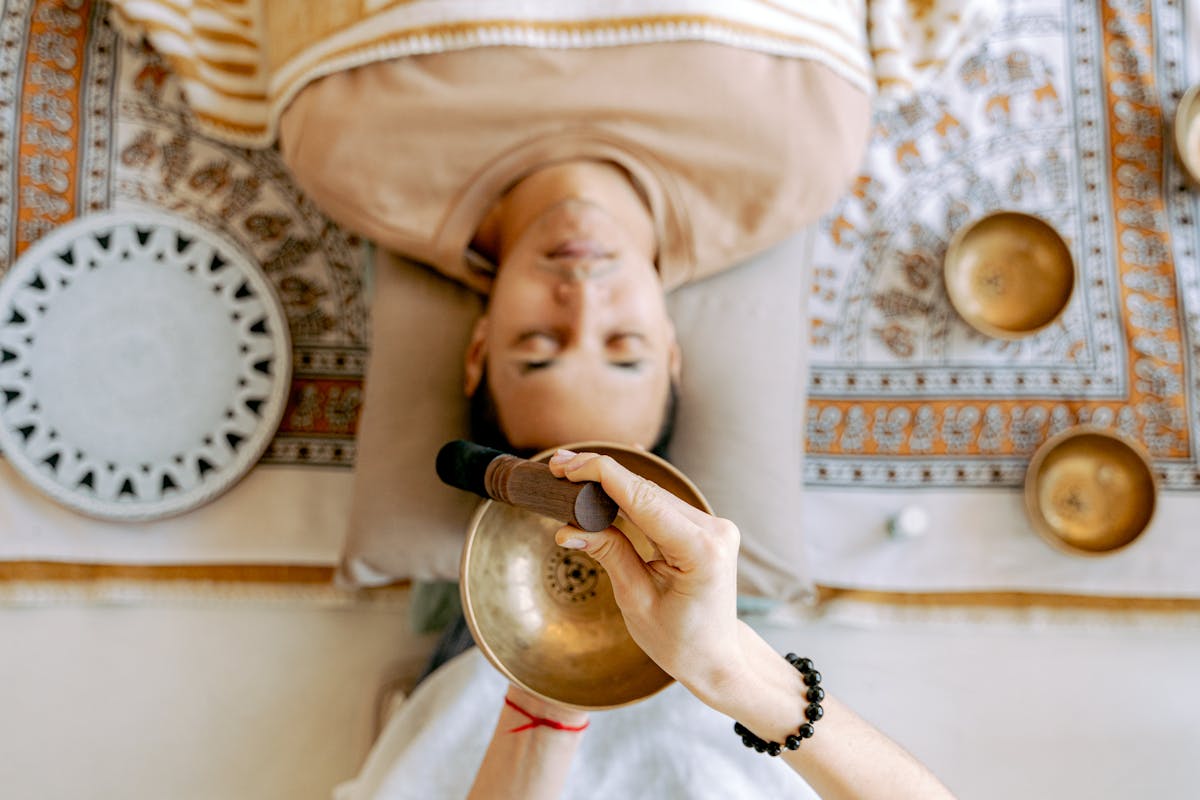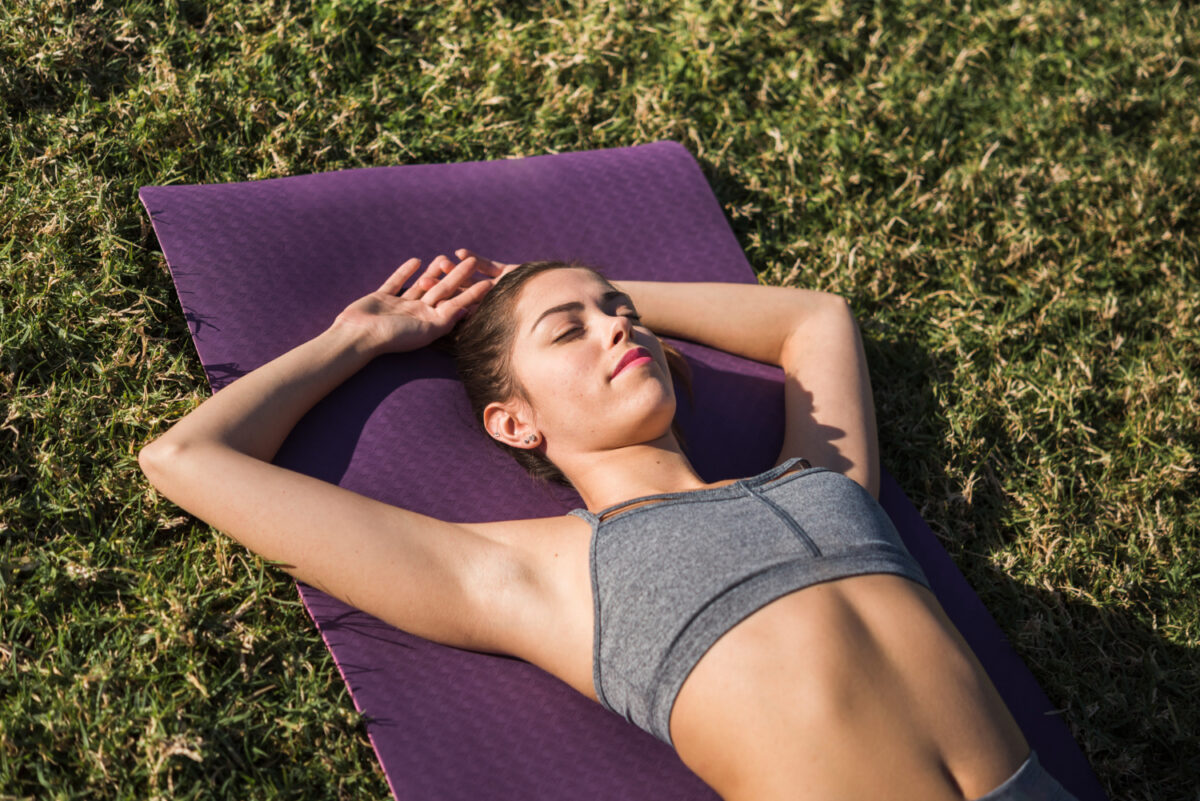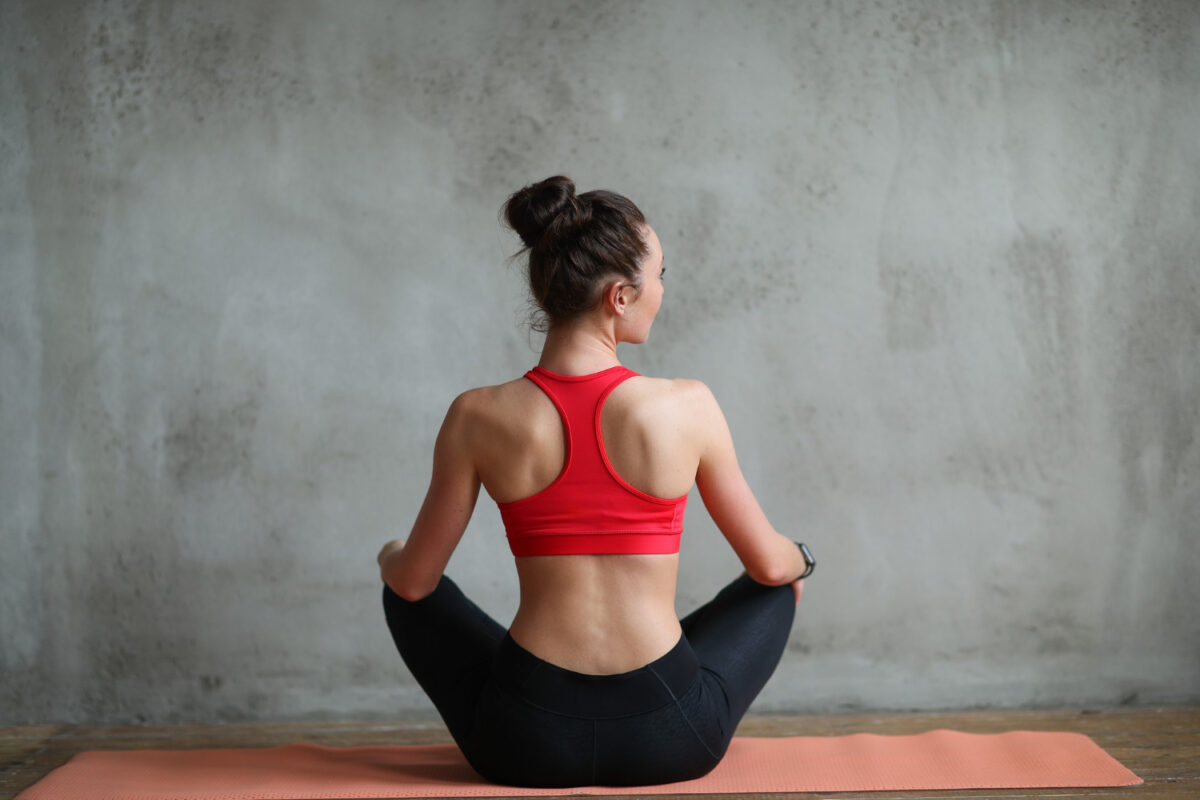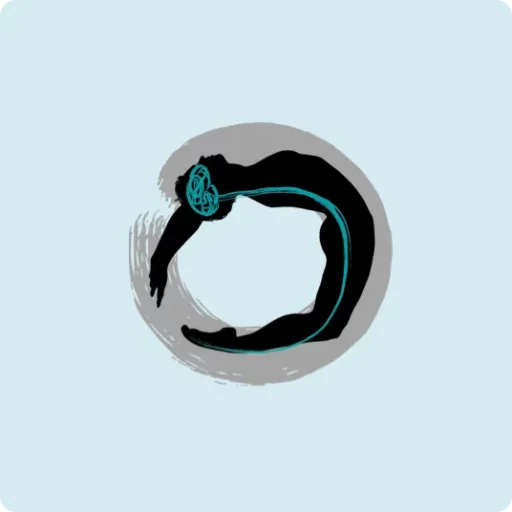During your yoga practice you will have felt that you can activate something more than your physical body. Since Yoga Synchrony today we answer the question what are the chakras and what is their meaning.
the subtle body
As if it were a Russian doll one inside the other, the human being is made up of koshas or layers of consciousness. The most basic is the physical body, what we touch and explore through our senses. Bones, muscles, organs and tissues, it is the support or root layer where some identify themselves, but if we were only our physical body, breathing, mind, thoughts, emotions, intuition, where are they?
Depending on the tradition we will talk about three or five koshas or layers. The physical body, the subtle body (formed at the same time by energetic, mental and intellectual body) and the causal body.
The one that concerns us today is the subtle body, since the chakras are located in our energetic, pranic or subtle body (although they have influence on the other bodies).
In the tradition of hatha-yoga and of Tantra Yoga, when referring to the subtle energetic body, it refers to the pranic energetic body or pranayama kosha. Its main characteristic is that it radiates energy or prana, both in and out of the physical body. The quality of this pranic energy will depend on our mental, emotional and spiritual state..
All those sensations that go beyond the senses are perceived through the subtle body. When someone is looking at us and we feel it through our backs, when our body hair stands on end in certain environments, when we connect with our emotional state. All those sensations, thoughts, emotions and intuitions that are outside the physical body are found in the subtle body.

What are the chakras?
The energy is not distributed uniformly in the subtle body but rather through channels: the nadis and vortices: the chakras.
The chakras are circles or vortices of vital energy that are distributed along the spine.. According to the yoga tradition, energy is distributed and mobilized within the subtle body through channels. There are more than 72,000 that intertwine and cross, the best known are the central canal of the column (sushumna) and the sun and moon nadis (Going Y pingala).
In the areas of the spine where the main nadis intersect, energy accumulates in the form of moving vortices, the chakras. Chakra etymologically means wheel. so they are centers of light, consciousness and energy in motion that vibrate at different frequencies, denser or more subtle and influence different organs, areas of the body, emotions, mental states, etc. They are the door to universal prana.
yoga practice, meditation and pranayama techniques mobilize and balance the energy of the chakras. Each posture, movement or sequence will send the energy from one chakra to another, activate or calm the chakra. There are no exclusive positions for a chakra and in each position we can activate them from head to toe or do nothing, it will depend on our state of listening and consciousness.
Traditionally we speak of 7 main chakras although there are more above and below the human body. and other reflex points called bindu which are just as interesting as the chakras themselves. In addition, each chakra has secondary chakras in the main organs and joints of the body.
Let's see them in detail.
Base chakra: Muladhara
Located at the base of the spine this chakra projects downward in the shape of a cone. It has influence on our feet, legs, bones and kidneys.
Its main function is give vitality to the physical body. It is related to land and survival. Everything that anchors us, gives us roots, structure and security. It is the energetic center connected to the material aspects (capacity to provide the basic necessities of life).
etymologically muladhara means the basics. Its root sound (bija mantra) is YAM. It is represented with a lotus flower with four petals.
We can connect with the energy of this chakra through the practice of earth connection asanas What vijayasana (the posture of the goddess), tadasana (the mountain pose), vkrasana (the pose of the tree), janu sirsanasa (flexion with the head on the knee) or any other posture that gives us the feeling of rooting our feet, hands or the base of the spine and being anchored to the present. Also with the closure mulabandha, practice barefoot or take walks in nature.
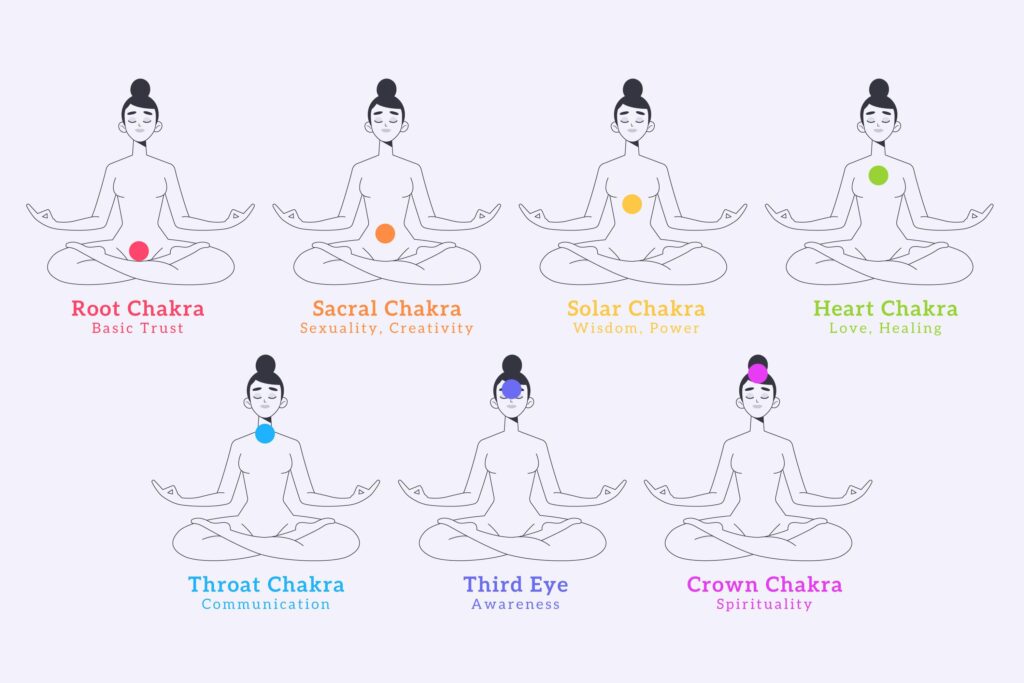
Pubic chakra: Svadhisthana
Located in the lower abdomen below the navel, it projects forwards and backwards in the shape of a diabolo.. It influences our reproductive health, womb, ovaries, gonads, genitals, knees and pelvis.
Its main function is physical creativity and sexuality. It invites us to manifest creative potential: to leave a mark. It is related to water and emotions. Our ability to relate to the other.
etymologically svadhisthana means abode of being, sweetness. Its root sound is VAM. It is represented with a lotus flower with six petals.
We can connect with the energy of this chakra through the practice of asanas for connecting with the body's water. What mandukasana (the frog in its different variants, standing up, with knees on the ground, etc.), upavista konasana (the turtle), tarasana (the star), also with the practice of Yin Yoga, the undulating movements of the cat-cow or any practice or fluid movement between the postures, also dance and artistic expression of all kinds.
Solar Plexus Chakra: Manipura
Located in the solar plexus between the navel and the tip of the sternum it projects forwards and backwards in the form of a diabolo. It influences the hips, strength, will, digestive processes, liver and control of emotions.
Its main function is inner communication and the development of the self. It deals with personal power, self-esteem and relationship with oneself, the ego and the personality separated from the inherited identity, the desire for power and to have. It is related to fire and the ability to act. A balanced chakra makes us have strength and empowerment to make our decisions and carry them out.
Etymologically it means jewel or shining stone. Its root sound is RAM. It is represented with a lotus flower with ten petals.
We can connect with the energy of this chakra through the practice of fire connection asanas What vijayasana (the posture of the goddess), the Warriors (virabhadrasana I, II, III), agnistambhasana (activation of internal fire), breathing kapalabhati Y bhastrika, also in practices carried out vigorously such as Ashtanga Yoga or Vinyasa Yoga of medium or high intensity. Also with the closure uddiyana bandha.
Heart Chakra: Anahata
Located in the center of the chest it projects forwards and backwards in the form of a diabolo. It influences breathing, the immune system, shoulders, arms, hands, blood circulation, the thymus.
Its main function is love and forgiveness. Giving life a direction: meaning and purpose. It is related to air and unconditional love. It represents the ability to love and openness to feelings of compassion and forgiveness (transcending wounds).
Etymologically it means sacred sound not pulsed. Its root sound is YAM. It is represented with a lotus flower with twelve petals.
We can connect with the energy of this chakra through the practice of heart expansion asanas. What dhanurasana (the bow in all its variants, standing, lying down, on feet and hands), bhujangasana (the cobra), matsyasana (the fish). Also the soft practices of Yin Yoga or Restorative Yoga where emphasis is placed on compassion towards oneself and towards others.
Throat Chakra: Vishuddha
Located in the throat, it projects forwards and backwards in the shape of a diabolo.. It influences the voice, the digestive system, breathing, the energy of the whole body, the thyroid, hormonal regulation.
Its main function is the communication. It is related to the ether and the capacity of expression. Using the voice to express our divine nature. The power of the word, sincerity, the alignment of thought with the heart, knowledge. It is the path of transit from the lower chakras to the more subtle ones.
Etymologically it means purity. Its root sound is HAM. It is represented with a lotus flower with sixteen petals.
We can connect with the energy of this chakra through the practice of asanas where a closing or opening of the throat occurs. What viparita karani (inversion on shoulders and head), matsyasana (the fish), breathing ujjayi. Also with the closure jalandhara bandha, in the chanting of mantras and the silent retreats.

Brow Chakra: Ajna
Located on the forehead, it projects forward in the shape of a cone., although there is a point just behind the skull (bindu) that resonates with the energy of this chakra but is not part of it. YoInfluences the eyes, the brain, the endocrine and vegetative nervous system, the hypothalamus and the pituitary gland.
Its main function is the intuition. It is related to vision and the mind's ability to synthesize. It deals with integration and concentration, the capacity for mental projection, intuition, clairvoyance and visualization, perception beyond duality and the conscious use of knowledge or wisdom.
Etymologically it means command or direction. Its root sound is OM. It is represented with a lotus flower with two petals.
We can connect with the energy of this chakra through the practice of visual projection asanas. like the archer (akarna dhanurasana), in the inverted postures on the head (sirsasana), or in any posture applying gaze fixation gestures or mudras such as agochari mudra (tip of nose) or shambhavi mudra (frown). Also in the practice of mobilizing the energy of the body: prana vidya or cleaning the eyes: treat.
Crown Chakra: Sahasrara
Located on the crown and projects vertically upwards in the shape of a cone. It influences the central nervous system, brain, epiphysis, spirituality, transit of death.
Its main function is transcendence and spirituality. It is related to the soul. It deals with spirituality, the connection with life and the connection to the higher realms of being, the regulation of biological rhythms, philanthropy and humanitarianism, the ability to trust in life, meditation and transcendent practice. It is the door of connection with spiritual reality.
Etymologically it means lotus with a thousand petals. Its root sound is the final vibration of OM or silence. It is represented with a lotus flower with 972 petals.
We can connect with the energy of this chakra through the practice of meditation.. Also practices of disidentification of the ego, suppression of the senses (pratyahara), or the inner silence (antar mauna).
Meditation to balance the chakras
Sit in a comfortable position that allows you to have a straight spine respecting the natural curvatures. Do the meditation with your eyes closed.
- watch your breaththe air going in and out of your body. Imagine that the air connects the two poles of your body, the base of your spine and the crown of your head. As if by breathing the air went from one point to the other lightly through the channel of your spine.
- Now find the base of your spine (pelvic floor, perineum or cervix) and imagine that you are totally anchored to the earth. As if your base is rooted towards the earth. Begin breathing at the base of your body, feeling as if you are standing on a bag of hot air. Feel this heat moving in a spiral under your body.
- Now we are going to sing the mantra resulting from the union of the seed sounds of each chakra making this heat, vibration or sensation rise in a spiral through your body from the base to the crown of the head. The song is: LAM VAM RAM YAM HAM OM MMM. The sound of the final om will vibrate from between your eyebrows to beyond the crown of your head until it falls silent.
Breathe out and relax, take a deep breath in through your nose and chant the mantra with your whole body relaxed, trying not to run out of air.
- Keep singing for a few minutes until you feel your whole being vibrating.
- End the meditation in the deepest silence without expectations open to what has to happen, but without expecting anything.
Knowing what the chakras are and what their meaning is will help you focus your yoga practice beyond physical exercises.
Silvia Gallego
Yoga teacher, author and editor of breathing books.


